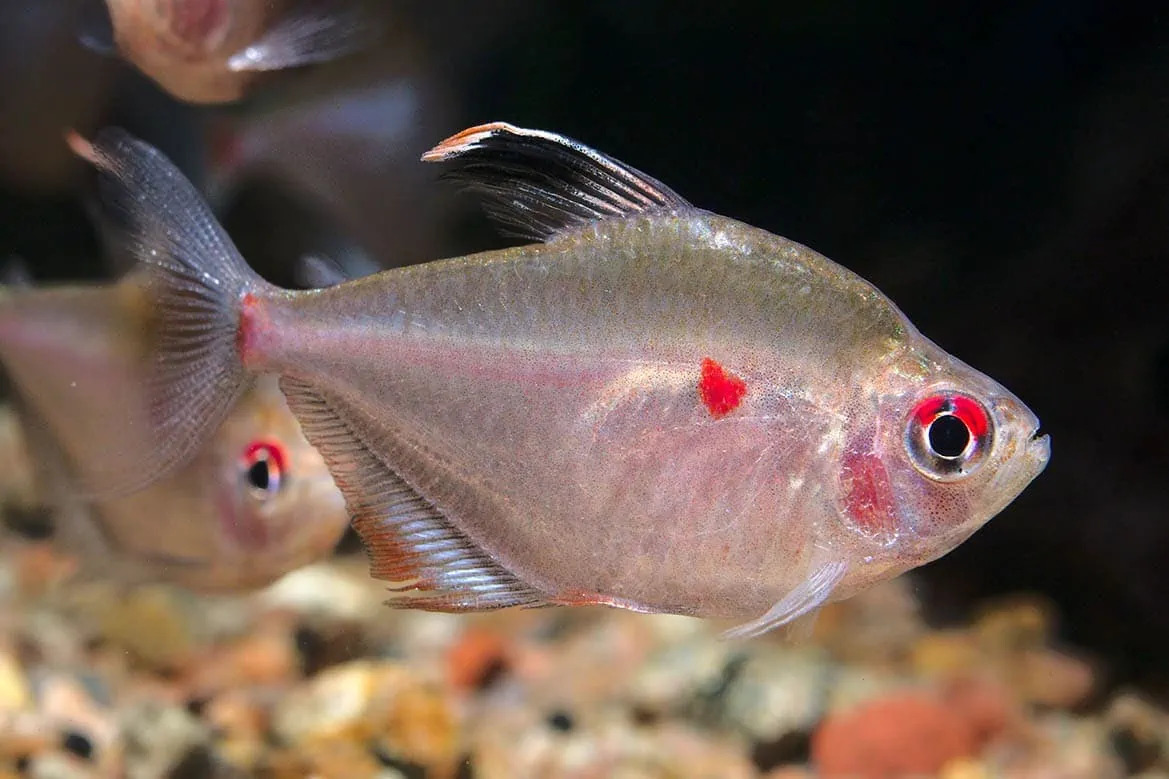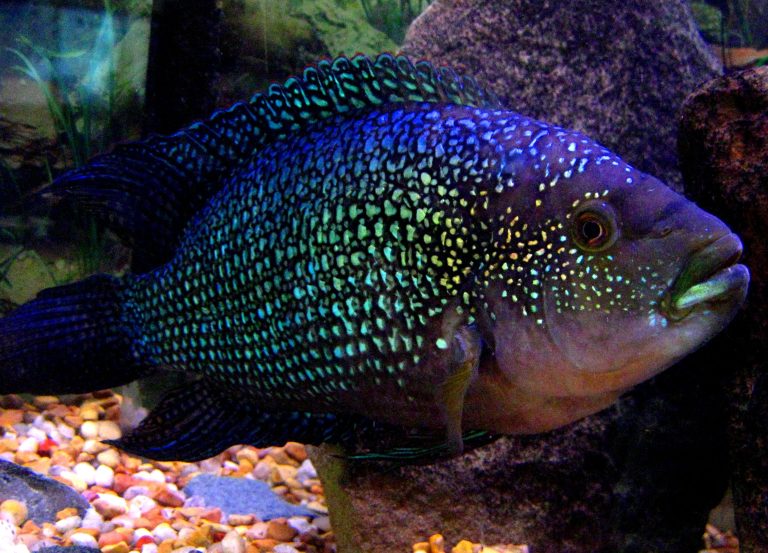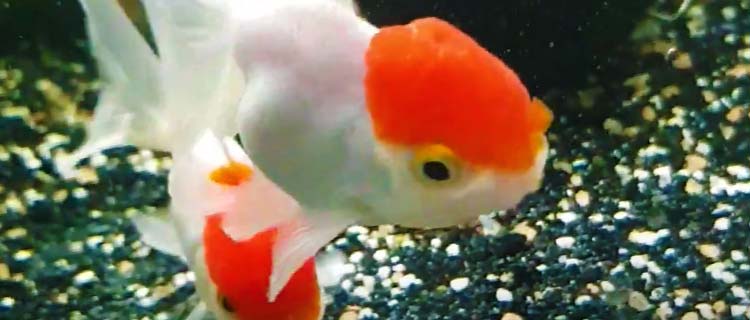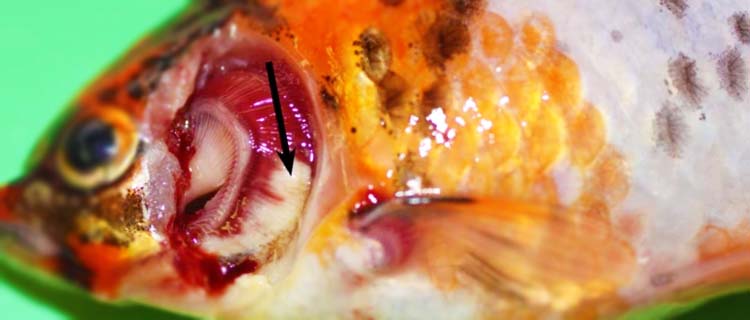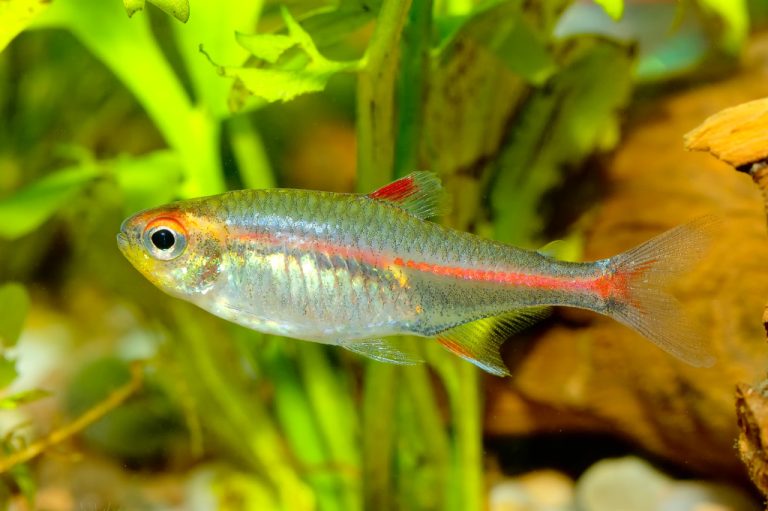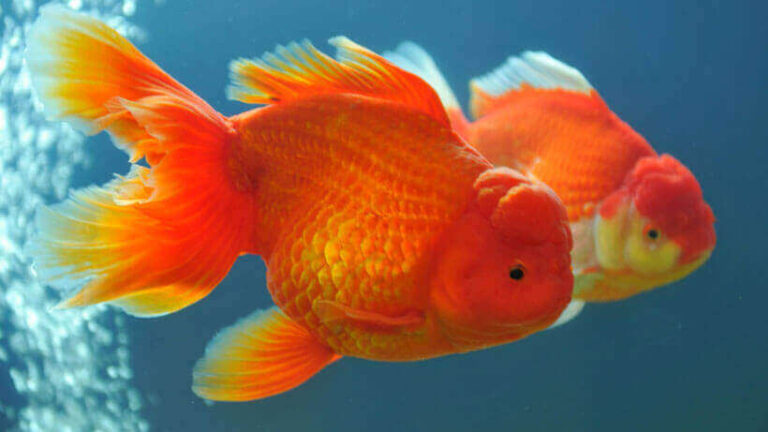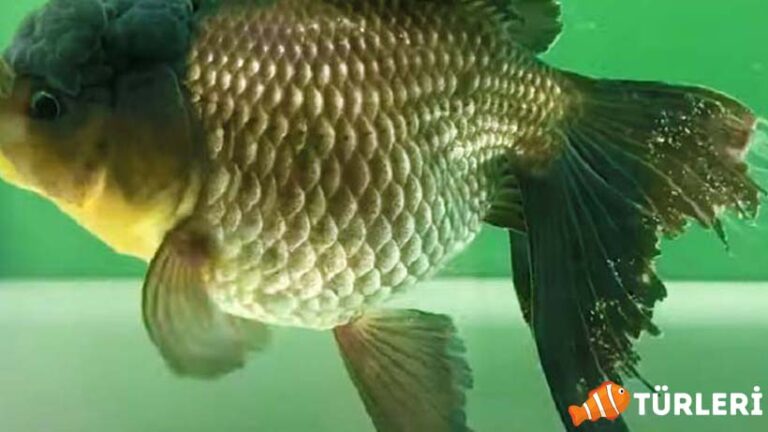Bleeding Heart Tetra
The Bleeding Heart Tetra, scientifically known as Hyphessobrycon erythrostigma, is a beautiful and unique freshwater fish native to the rivers and streams of South America, specifically in the upper Amazon basin. This species is popular among aquarists because of its vibrant colors and interesting heart-shaped marking on its side, which resembles a ‘bleeding heart.’
Bleeding Heart Tetra Fish Species Summary:
| Scientific Name: | Hyphessobrycon erythrostigma |
| Origin: | Upper Amazon basin in South America |
| Diet: | Omnivore (feeds on a variety of foods including high-quality flake or pellet food, live or frozen foods like brine shrimp, daphnia, and bloodworms, and occasional vegetables) |
| Behavior: | Generally peaceful but can be slightly nippy towards other fish with long, flowing fins. |
| Behavior Towards Their Own Species: | Schooling fish, prefer to be in groups of at least 6-8 individuals. |
| Swimming Zone: | Middle |
| Water Temperature: | 22 – 28 °C |
| Water Hardness: | 5 – 15 dGH |
| pH Level: | 6.0 – 7.5 |
| Minimum Aquarium Volume: | 76 Liters (20 gallons) for a small group of Bleeding Heart Tetras. |
| Adult Size: | Up to 6.5 cm (2.5 inches) |
| Reproduction: | Egg-scatterers, no parental care. Require a separate breeding tank with specific conditions to encourage breeding. |
| Lifespan: | 5 – 7 years (with proper care) |
| Care: | Moderate, requires a balanced diet, regular water changes, and a well-thought-out community tank with compatible species. |
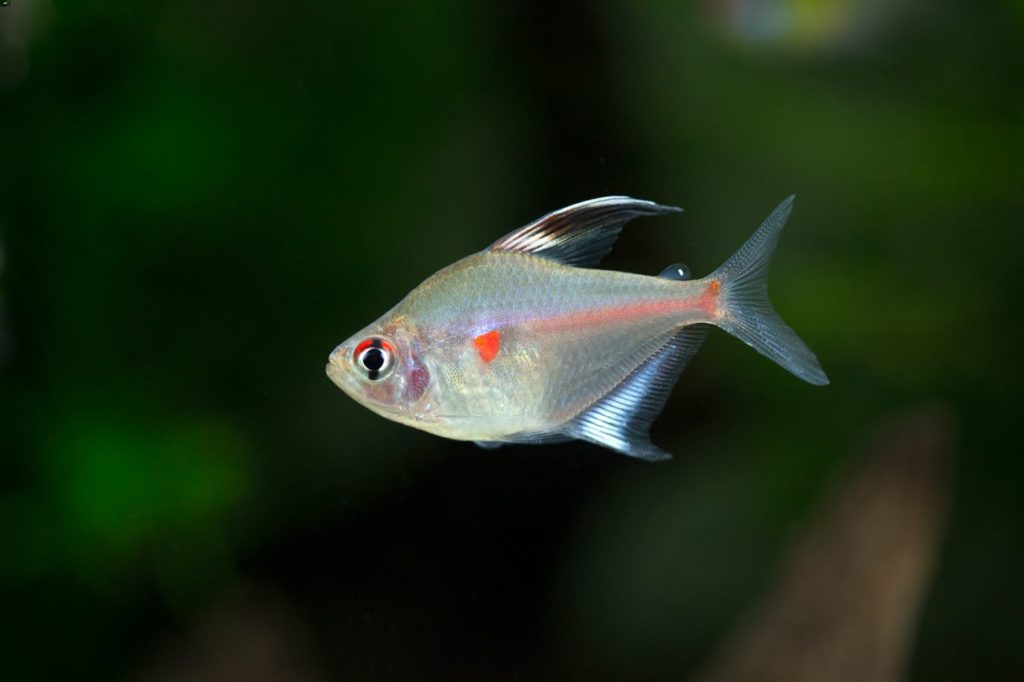
Appearance
The Bleeding Heart Tetra is a small to medium-sized fish, typically reaching around 2.5 inches (6.5 cm) in length when fully grown. It has a fairly stocky and compressed body, with a silver base color that is often iridescent, giving it a slight shimmer under aquarium lighting. One of its most recognizable features is the bright red spot located just behind the gill cover on each side, which strikingly resembles a bleeding heart, and often extends as a fainter blush down the lower side of the body. The intensity of this red spot can vary among individuals and may become more vibrant during the breeding season or in dominant males.
The fins of the Bleeding Heart Tetra are also quite distinctive. The dorsal and anal fins are slightly elongated and may have a mix of black, white, and/or red coloration. The dorsal fin usually has a black border, and in some specimens, a white or red sub-border is also present. The anal fin is often edged with black and has a red or white stripe just inside this edge. The males generally have more pronounced and elongated fins, especially the dorsal fin, which can have an almost feathery appearance. The females, on the other hand, have a more rounded body and their fins are less pronounced, which helps in differentiating between the sexes. Additionally, the females usually have a slightly duller coloration compared to the males, which are often more vibrant and striking.
Tank Size
A 20-gallon tank (approximately 76 liters) is the minimum recommended size for a small group of Bleeding Heart Tetras. They are schooling fish, which means they prefer to swim and stay together in groups. Keeping them in groups of at least six is essential to ensure they feel secure and exhibit their natural behavior. In the wild, these fish are found in large groups, and keeping them in a similar environment in captivity helps reduce stress and encourages normal social interactions. If you have the space, a larger tank is always better as it provides more room for swimming and can help in maintaining better water quality. Additionally, a larger tank will allow you to keep a larger school of fish, which can create a more visually impressive display and also encourage more natural behavior among the fish.
Water Parameters
Maintaining the correct water parameters is crucial for the health and well-being of Bleeding Heart Tetras.
pH Level: The pH level of the water should be kept between 6.0 and 7.5. This is slightly acidic to neutral water, which is similar to the natural environment of these fish in the Amazon basin.
Temperature: The water temperature should be maintained between 72°F and 82°F (22°C and 28°C). This tropical temperature range is ideal for Bleeding Heart Tetras and is consistent with their natural habitat.
Hardness: The hardness of the water should be maintained between 5 and 15 dGH (degrees of general hardness). This is considered to be soft to moderately hard water.
It is also important to maintain a low level of nitrites and ammonia in the tank, as high levels of these can be harmful to the fish. Regular water changes, at least once every two weeks, are recommended to help maintain the water quality. Additionally, a good filtration system is essential to keep the water clean and free of harmful substances.
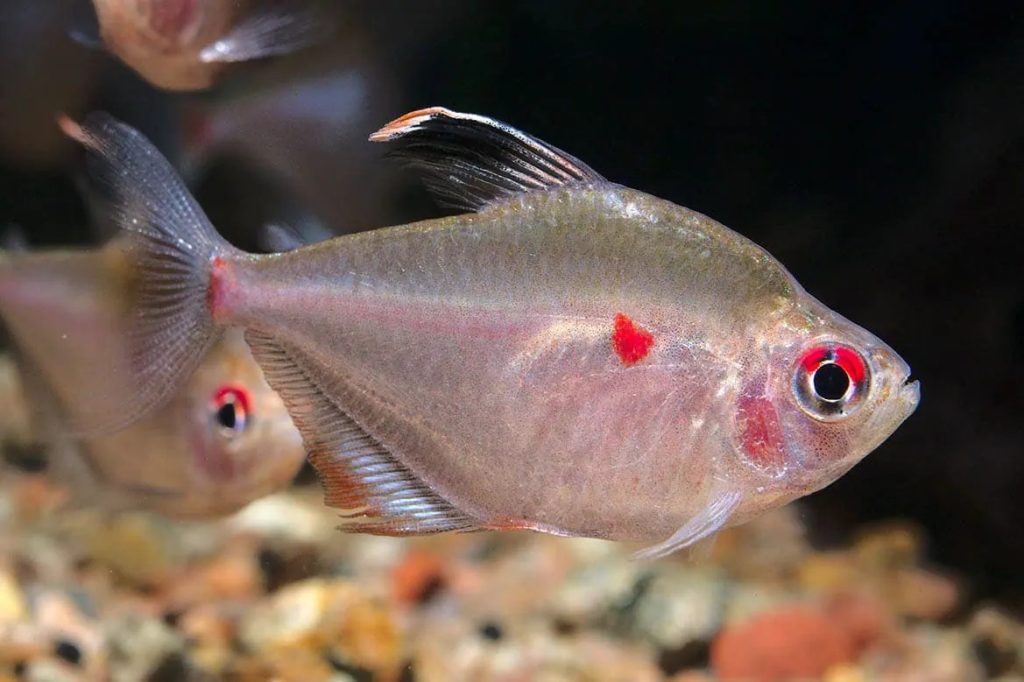
Filtration
A high-quality filter that offers both mechanical and biological filtration is essential for maintaining a healthy aquarium environment.
- Mechanical Filtration: This is the first stage of the filtration process. Mechanical filtration involves the removal of solid particles from the water, such as fish waste, uneaten food, and plant debris. This is usually achieved by passing the water through a sponge or a fine mesh that traps these particles. Regular cleaning or replacement of the mechanical filter media is necessary to prevent clogging and to ensure optimal filtration efficiency.
- Biological Filtration: This is the second stage of the filtration process and is crucial for breaking down harmful substances like ammonia and nitrites into less harmful nitrates. Biological filtration relies on beneficial bacteria that colonize the filter media. These bacteria convert ammonia (produced from fish waste) into nitrites, and then into nitrates, which are less toxic and can be absorbed by plants or removed during water changes.
It is important to note that the filter should not be cleaned too thoroughly or too often as this can remove the beneficial bacteria that are essential for the biological filtration process. Additionally, the filter media should be chosen carefully to ensure it is suitable for both mechanical and biological filtration.
Overall, a good quality filter that provides efficient mechanical and biological filtration will help to keep the water clean, reduce the levels of harmful toxins, and promote the health and well-being of the fish.
Decoration
Bleeding Heart Tetras thrive in an environment that resembles their natural habitat, so it is important to consider this when decorating the tank.
- Plantation: They prefer a tank that is densely planted as it provides them with plenty of hiding spots and makes them feel more secure. Plants like Amazon sword, java fern, and anubias are good options as they are sturdy and can withstand the activity of the fish. Floating plants can also be added as they provide shade and help to reduce stress.
- Driftwood and Rocks: Adding driftwood and rocks to the tank can help to create a more natural environment for the Bleeding Heart Tetras. They provide additional hiding spots and also help to create visual interest in the tank. However, make sure that there are no sharp edges that could harm the fish.
- Open Space: While it is important to provide plenty of hiding spots, it is also necessary to leave enough open space for swimming. Bleeding Heart Tetras are active swimmers and they need space to move around. Make sure to arrange the decorations in such a way that there is enough open space in the middle of the tank for swimming.
- Substrate: A dark-colored substrate is preferred as it helps to bring out the colors of the fish. Fine gravel or sand is a good option as it is gentle on the fish’s fins.
Overall, when decorating the tank, it is important to create a balance between providing enough hiding spots and leaving enough open space for swimming. Additionally, it is important to choose decorations that are safe for the fish and that help to create a natural and comfortable environment.
Feeding
Bleeding Heart Tetras are omnivorous, meaning they eat both plant and animal matter, and they have a wide range of foods they will accept. Providing a balanced diet is crucial for their health and well-being.
- Dry Food: High-quality flake or pellet food should form the staple of their diet. These foods are specifically formulated to provide all the essential nutrients that the fish need. Make sure to choose a product that is appropriate for the size of the fish.
- Live or Frozen Foods: In addition to dry food, it is also important to provide live or frozen foods, such as brine shrimp, daphnia, and bloodworms. These foods are rich in protein and will help to keep the fish healthy and vibrant. Live foods can also help to stimulate the fish and encourage natural foraging behaviors.
- Vegetables: Bleeding Heart Tetras will also benefit from the occasional inclusion of vegetables in their diet. Blanched spinach, lettuce, and zucchini are good options. These provide essential vitamins and minerals and can help to prevent nutritional deficiencies.
- Feeding Schedule: It is recommended to feed the Bleeding Heart Tetras small amounts of food 2-3 times a day. Only provide as much food as they can consume in a few minutes. Overfeeding can lead to water pollution and health problems for the fish.
It is important to vary the diet of the Bleeding Heart Tetras to ensure they receive all the necessary nutrients. A balanced diet, combined with proper water conditions, will help to keep the fish healthy and vibrant.
Behavior and Tankmates
Bleeding Heart Tetras are known for their generally peaceful and social nature, but there are some important considerations to keep in mind when choosing tankmates for them.
- Temperament: Although they are generally peaceful, Bleeding Heart Tetras can be slightly nippy, especially towards other fish with long, flowing fins. This behavior is usually not aggressive but can cause stress and damage to fish with delicate fins. Therefore, it is best to avoid keeping them with fish that have long, delicate fins, such as guppies or bettas.
- Schooling Behavior: Bleeding Heart Tetras are schooling fish, which means they prefer to be in groups of at least 6-8 individuals. Keeping them in a group helps to reduce stress and also encourages natural behaviors. A solitary Bleeding Heart Tetra can become stressed and may exhibit abnormal behaviors.
- Ideal Tankmates: Ideal tankmates for Bleeding Heart Tetras are other species of tetras, barbs, corydoras catfish, and small to medium-sized rasboras. These fish have similar requirements in terms of water parameters and are generally peaceful and compatible with Bleeding Heart Tetras.
- Avoid Aggressive Species: It is important to avoid keeping Bleeding Heart Tetras with aggressive or predatory species, as they can become stressed and may be targeted by more aggressive fish.
Overall, when choosing tankmates for Bleeding Heart Tetras, it is important to consider the temperament and requirements of the other fish. A well-thought-out community tank with compatible species will help to ensure a harmonious environment for all the inhabitants.
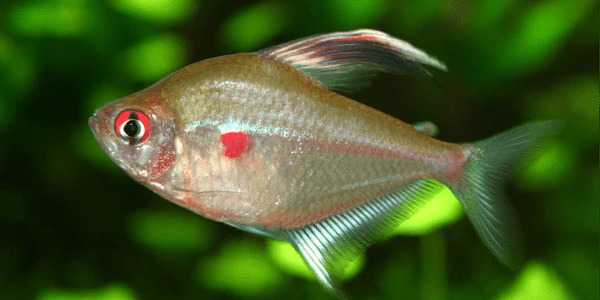
Breeding
Breeding Bleeding Heart Tetras can be quite challenging as they are egg scatterers, meaning they scatter their eggs randomly over the substrate or plants, and do not provide any parental care to their eggs or fry. Here are some steps and tips to encourage successful breeding:
- Set Up a Breeding Tank: It is recommended to set up a separate breeding tank with specific conditions to encourage breeding. The water should be soft and acidic (pH 6.0-6.5) and the temperature should be slightly higher than usual, around 80°F (27°C). Provide plenty of fine-leaved plants or a spawning mop for the fish to scatter their eggs on.
- Select a Breeding Pair: Choose a healthy pair of mature Bleeding Heart Tetras. The female should be plump and the male should have vibrant colors.
- Condition the Breeding Pair: Feed the breeding pair a diet of high-quality live foods, such as brine shrimp and bloodworms, for a few days before introducing them to the breeding tank. This will help to condition them and encourage spawning.
- Introduce the Breeding Pair: Once the breeding pair is conditioned, introduce them to the breeding tank. It is best to introduce them in the evening as they usually spawn in the morning.
- Spawning: The male will chase the female around the tank and encourage her to release her eggs, which he will then fertilize. The female will scatter her eggs on the plants or spawning mop.
- Post-Spawning Care: After spawning, it is best to remove the parents from the breeding tank as they may eat the eggs. The eggs usually hatch within 24-48 hours.
- Feeding the Fry: Once the eggs have hatched, the fry will be free-swimming and will need to be fed. Infusoria or commercial fry food are suitable options.
It is important to note that Bleeding Heart Tetras are not the easiest fish to breed and it may take several attempts to achieve success. Additionally, the fry are very small and delicate and will require careful attention and feeding.
The Bleeding Heart Tetra is a beautiful and relatively easy-to-care-for fish that will make a colorful addition to any community aquarium. By providing them with the appropriate tank conditions, a balanced diet, and compatible tankmates, they will thrive and bring joy to any aquarium enthusiast.

